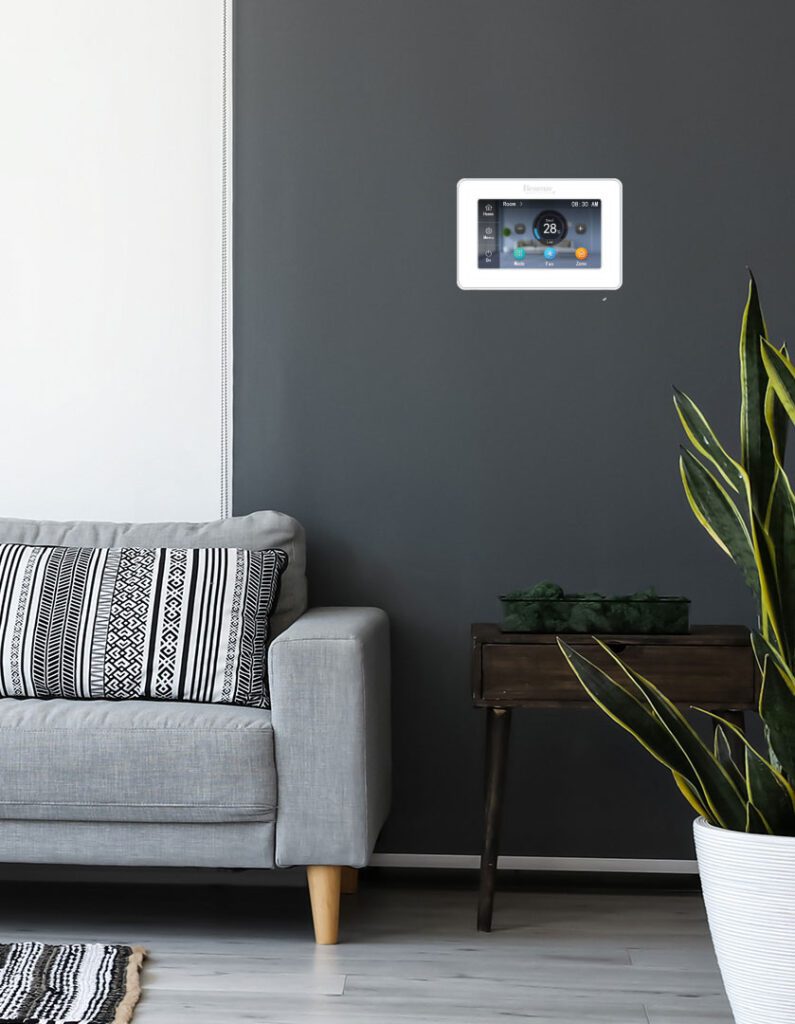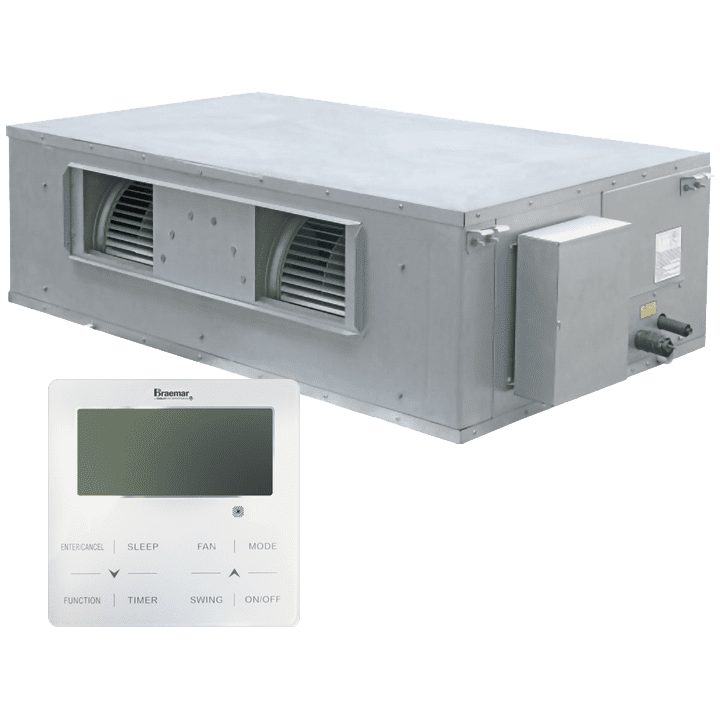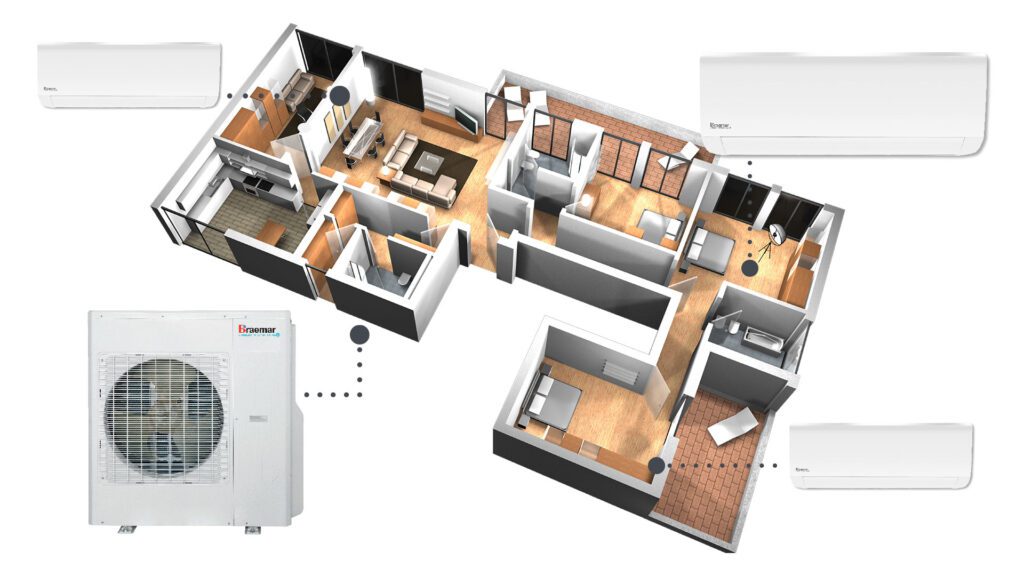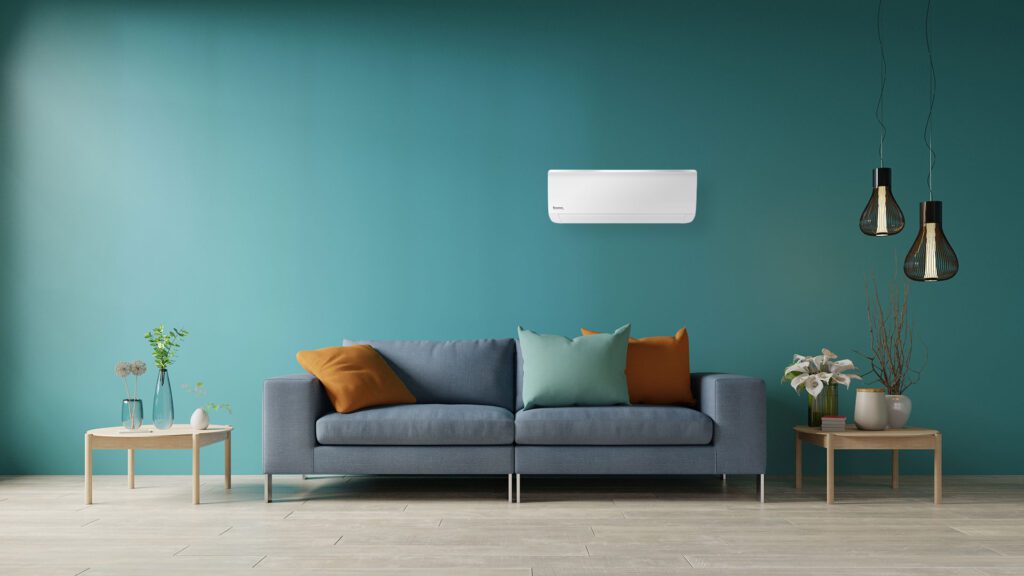Ducted Reverse Cycle Air Conditioning
Ducted Reverse Cycle Air Conditioning
Braemar Ducted reverse cycle is the ideal solution for the whole of home or office heating and cooling. Consisting of an indoor and outdoor unit, the indoor unit is placed within the roof space and is connected to a series of vents within the house via ductwork. Warm or cool air is circulated to all rooms via this system and can be set up to operate in different zones, saving money on energy costs.

Benefits & Features
Power saving
High energy efficiency results in significant savings in running costs.
Efficient and quiet
Inverter technology, optional motion sensor and installer settings tailoring airflow all make for best efficiency and the quietest operation.
Comfort features
Quiet function and sleep function settings.
Zone your home*
Braemar Zone Control can control up to 8 zones in your home, and allows you to switch between zones, and turn zones on and off, saving on energy costs.
Protective Coating
Advanced protective coating on the outdoor coil to reduce corrosion and protect from the harsh Australian elements.
*Zone control optional extra.
Braemar Zone Control
Smart, sophisticated and incredible intuitive
Discreet and modern design, with an easy to navigate, touch screen interface.
Useful settings
Handy features like child lock, quiet mode and servicing information.
Program mode
Programmable daily, weekly, or 2 weekly, 8 time-period program, customisable to suit your lifestyle.
‘I Demand’ function
When turned on, the power input is limited to 75%, to assist with reducing energy bills.
Wi-Fi Smart App*
Control your comfort needs from your phone, from wherever you are.
*Wi-Fi module sold separately.

Single or Three phase ducted air conditioning?
Single phase is the standard method of distribution of electric power in most homes. For larger homes with multiple high powered appliances, three phase power is generally recommended and will deliver a much more consistent power supply than a single phase. It is important to choose your Ducted reverse cycle air conditioner based on your requirements, rather than the power supply readily available.
Your Braemar dealer will be able to provide more guidance on which ducted reverse cycle air conditioner will best meet your requirements.
Other Reverse Cycle Air Conditioning Options
Frequently Asked Questions
Ducted Reverse Cycle Air Conditioning FAQs
What size ducted reverse cycle system is right for me?
Several factors need to be taken into account when determining the size of a ducted reverse cycle system. These include the floor area you wish to cool or heat, zoning requirements, home insulation, the climate in your region and number of doors and windows.
- If you choose a ducted reverse cycle system that is too small for your space, it may struggle to adequately cool or heat the area. This can result in inefficient operation, longer running times, and potential wear and tear on the system. It may also lead to discomfort and inconsistent temperature control.
- Oversized ducted reverse cycle systems tend to cycle on and off frequently, which can result in temperature fluctuations, increased energy consumption, and unnecessary wear on the system components.
I have a two storey home, can I install a ducted reverse cycle system?
If your home is being newly built, we strongly encourage you to incorporate HVAC ductwork cavities into the building plans, if they have not been included already. For an existing home, the design will largely determine where, and if it is possible to get ductwork from the top to the bottom storey. The ducts are generally run through cupboards, walk-in robes and linen closets for example. Speak with your Braemar dealer for an in-home assessment for the best solution for your home.
How do I operate my unit efficiently?
Allowing your system to gradually heat, or cool, will be more energy efficient than cranking your thermostat settings. Whilst it may be tempting to set the control to minimum for cooling, or, maximum for heating, a 1°C increase on the thermostat can equate to up to 10% more energy used*. For example, heating set to 22°C will have to work much harder than if it were set to 19°C, when heating.
* Information sourced from https://www.energy.gov.au/households/heating-and-cooling



